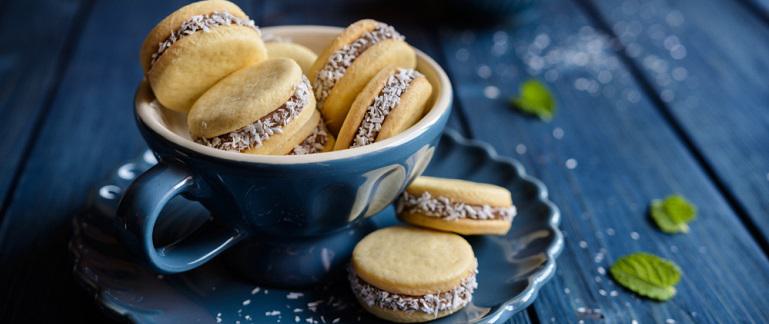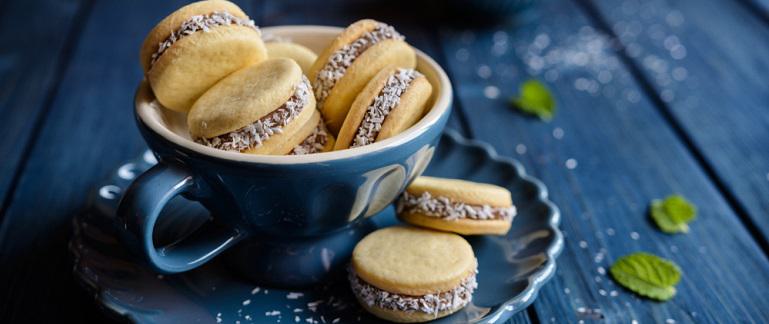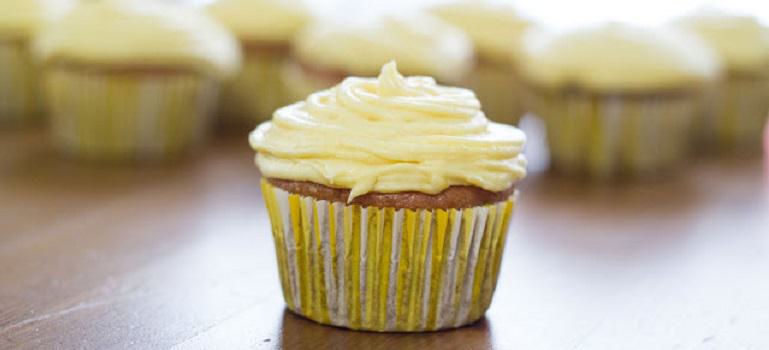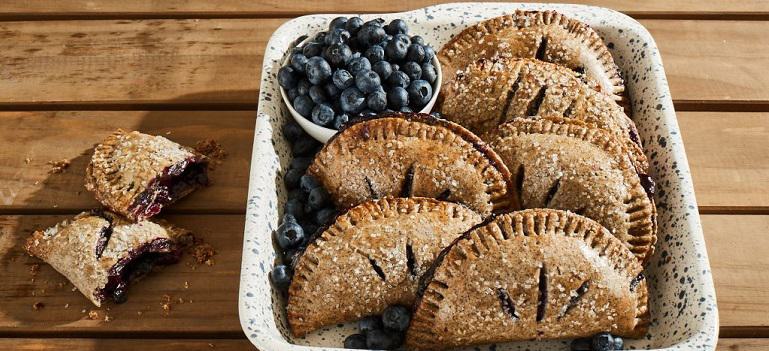


Looking for more information on how to use cornstarch in your baked goods? You're not alone. More and more bakers are swapping starches for flour in their recipes. If that sounds like you, then welcome to the starch club! While subbing in starches is on the rise, knowing which starch to use in your recipes can be the tricky part. To help you on your journey into the use of starches, we've created this simple all-in-one guide on cornstarch. In this guide, you'll discover where cornstarch comes from and how to use it. We've even added in some recipes to get you started! Keep scrolling to learn all there is to know about baking with cornstarch.
First things first: let's discuss what cornstarch is and where it comes from. Cornstarch is one of the most versatile starches there is. Extracted from the starchy endosperm of corn kernel, it's a white powdery substance that is virtually flavorless. Contrary to what some people think, corn starch and corn flour are not the same thing. It is a terrific ingredient for thickening sauces, puddings, soups and pie fillings, and is also used in many baked good recipes. It is often mixed with a small amount of cold liquid to create a slurry to thicken sauces. When added to cake, cookie, pie filling and shortbread recipes, cornstarch helps create a crumbly and tender dessert-like texture. Commercially, cornstarch is often used as an anti-caking agent. When added to packaged goods like shredded cheese, cornstarch coats the cheese and helps to absorb moisture that would otherwise cause spoiling. This absorption process also helps prevent food from clumping over time. Additionally, it is used when making sugars, such as corn syrup.

Peach Cupcakes with Peach Buttercream[/caption] When cooking with cornstarch, it's best to mix this ingredient into a recipe that is at room temperature. When cornstarch is added to too hot of a mixture, the heat can cause unwanted clumping. Before adding any starch to a recipe, it's recommended first to make a slurry. To make a slurry, simply mix cornstarch with a cold liquid such as water. This mixture will create a paste-like substance, that you can then add to the desired recipe. Using this slurry method will ensure that the cornstarch is evenly distributed throughout the recipe and not broken down by the heat. It is not recommended to freeze sauces and soups that include cornstarch. Freezing cornstarch can cause the molecules in the starch to break down, and once thawed, the liquid will not hold the same texture as before.
Use as a Thickening Agent
Cornstarch is often used as a thickening agent when added to soups, stews and gravies. Denser than flour, less cornstarch is needed to thicken a liquid to the desired consistency. Here's how it works: when cornstarch is added to a recipe, the starch molecules work to absorb water and thicken the mixture. When heated, those molecules swell and consume even more of the liquid in the recipe. Upon thoroughly cooking, the starch in the mix will have expanded six to ten times its size. Once the mixture cools, these same molecules will set. The setting of these molecules can help further solidify the dough, which makes cornstarch a great thickening agent for gooey fillings like pies and puddings. However, this molecule expansion is limited. While a cornstarch enriched recipe can be brought close to a boil, it should never be fully boiled. When cornstarch is exposed to too high of temperatures, the starch molecules will begin to deflate, and the mixture will return to its runny state.
Create Delicious Baked Goods
Cornstarch not only acts as a thickening agent, but it can also be used in baked goods like cookies, brownies and cakes. If you're searching for more structure in your favorite dessert recipe, then cornstarch might be just the ingredient you need! Combining a starch like cornstarch with other flours can help soften the rigid proteins of the flour, resulting in a light and chewy dessert. Similar to when adding cornstarch to a soup or pudding, if adding cornstarch to a dessert batter, it should first be turned into a slurry. This will ensure that all of the molecules remain intact and that the starch is evenly distributed. Upon adding cornstarch to your baked goods, evaluate it as you would a soup. Has your batter reached the desired consistency? If not, then a little more cornstarch may be needed. Once your dough looks perfect, bake your dessert like usual. The result? Light, fluffy and delicious desserts made to perfection! 
Use as Anti-Caking Agent
Ever wonder why your powder sugar ingredients included cornstarch? Cornstarch acts as a great anti-caking agent! By keeping moisture and condensation from reaching whatever it's mixed with it helps prevent lumps in finely ground foods like sugar. Still, cornstarch isn't just used to ward off moisture from sugar. The next time you're in the supermarket, take a look at how many products list cornstarch as an ingredient. From gravy granules to shredded cheese, you'll surely be surprised by the wide variety of foods cornstarch is added to.
Fry Foods with Cornstarch
Aside from an anti-caking ingredient, cornstarch can also be used as a coating for fried foods! While cornstarch shouldn't be used as a substitute for flour in baked goods, you can easily substitute it in for flours when coating fried chicken, fish or other dishes. Not only will cornstarch work in the same way that flours do, but it will hold up better against sauces and absorb less of the frying oil. Less oil means less fat in your meal! When frying food with cornstarch, we recommend that you coat the dish lightly. Applying a light even coat to your food will ensure that it results in a crispy texture. When too much cornstarch is added, the coating often turns out gummy rather than crunchy. For the perfect, gluten free fried food, consider blending cornstarch with a gluten free flour like almond flour. This will help create a more breaded result, similar to wheat flour.
If you have celiac disease or gluten sensitivity, you must be very careful about the ingredients you add to your recipes. Even if an ingredient is naturally gluten free, if it's processed in a facility that is not, it could be contaminated and irritate those with gluten intolerance. Now, you may be wondering, is cornstarch gluten free? The simple answer is yes! When pure, cornstarch is 100% gluten free. Remember, cornstarch is derived from corn, not from gluten grains like wheat and rye. Unfortunately, many manufacturers produce cornstarch in a gluten containing facility. To avoid gluten consumption, it's important to purchase high-quality cornstarch that bears a gluten free label. Bob's Red Mill Cornstarch is manufactured in our dedicated gluten free facility. After processing, it is tested for gluten free integrity in our quality control lab. Aside from being gluten free, our cornstarch is also kosher and vegan. Committed to providing you with the most wholesome ingredients possible, we pride ourselves on the integrity and quality of each product we sell.
Who doesn't love cupcakes? The perfect dessert for spring, this delicious treat is the ideal addition to your Mother's Day brunch. A yummy peach-filled treat, these cupcakes mix cornstarch with our Organic Unbleached White All-Purpose Baking Flour to create a light and chewy cupcake texture that will have your tastes celebrating after just one bite. Topped off with a homemade peach buttercream, this is one dessert you won't want to miss out on.
 A tasty treat, these Oatmeal Crisp Rhubarb Bars have found a way to pack the sunshine of summer and sweetness of spring into one delicious dessert. To create a filling of perfect consistency, cornstarch is added as a thickening agent. Because cornstarch is virtually flavorless, adding this ingredient improves the texture of the recipe without changing the taste. Sweet, tart and bursting with flavor, these bars are the perfect treat to serve at your next outdoor picnic!
A tasty treat, these Oatmeal Crisp Rhubarb Bars have found a way to pack the sunshine of summer and sweetness of spring into one delicious dessert. To create a filling of perfect consistency, cornstarch is added as a thickening agent. Because cornstarch is virtually flavorless, adding this ingredient improves the texture of the recipe without changing the taste. Sweet, tart and bursting with flavor, these bars are the perfect treat to serve at your next outdoor picnic!
Summer couldn't come sooner. The warm weather and sunshine-filled days are just what we're craving! Instead of speeding up summer, we've decided to bundle it up into a delicious dessert. And these fruit-filled pastries are just what we had in mind. Sweet, light and summer-ready this Blueberry Peach Buckwheat Hand Pie recipe is just what you need to get ready for summertime. Made with buckwheat flour and Unbleached White All-Purpose Flour, they have a slightly nutty taste. For the filling, if you're using frozen fruit, we recommend adding three tablespoons of cornstarch to achieve the desired consistency. A great treat to make in advance, both the dough and the filling can be refrigerated until ready to use. Now that you're familiar with cornstarch and how to use it, it's time that you put it to the test with one of these delicious recipes! Use it as a thickening agent in your net soup, or use it to create one of the tasty desserts that we've listed above. Whichever way you decide to use cornstarch in baking, it's bound to become a staple in your kitchen in no time! We hope this guide has helped answer all of your cornstarch questions and encourages you to branch out when baking. Do you have a favorite way to use cornstarch? We'd love to know what it is. Let us know in the comments below. From everyone at Bob's Red Mill, happy baking!